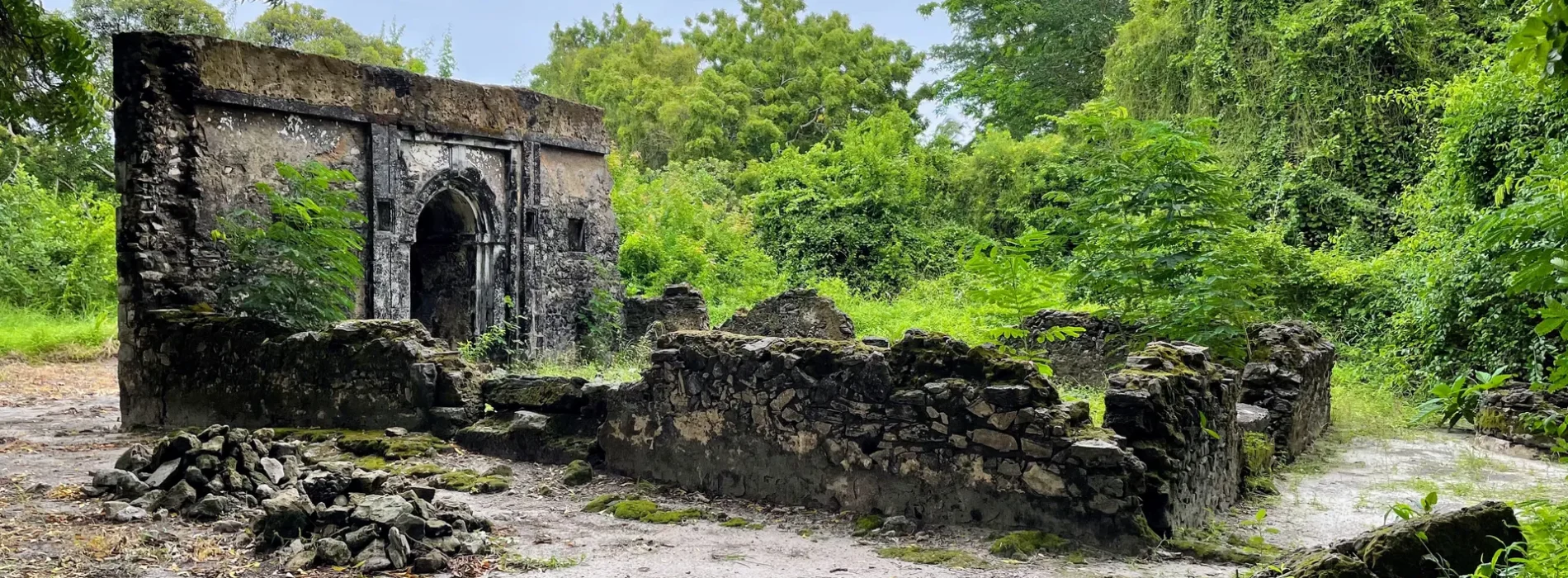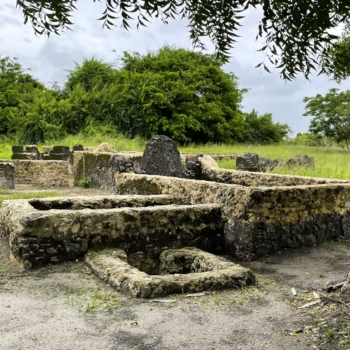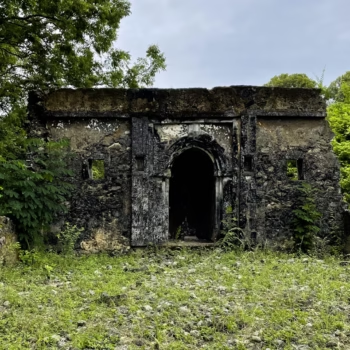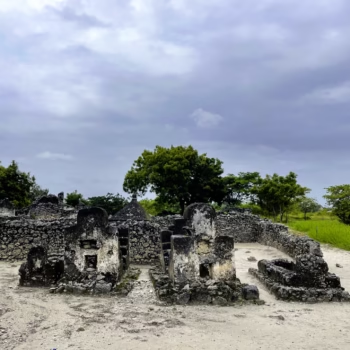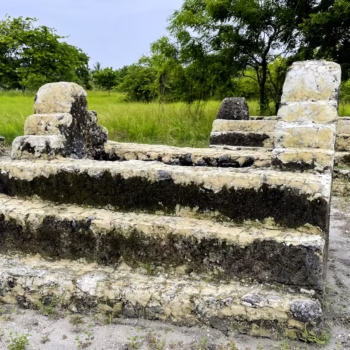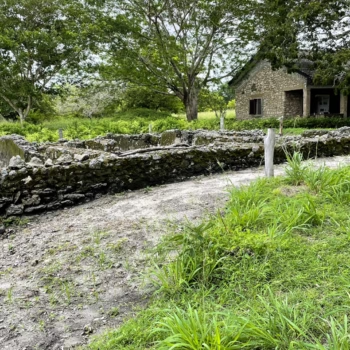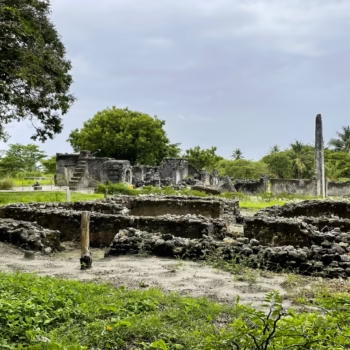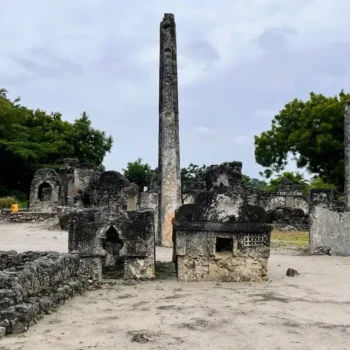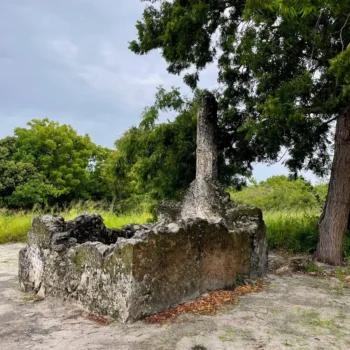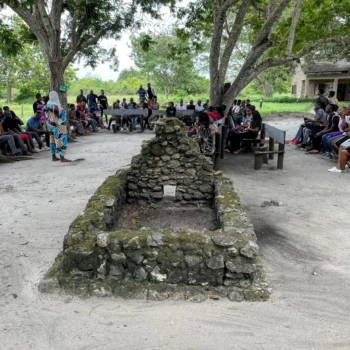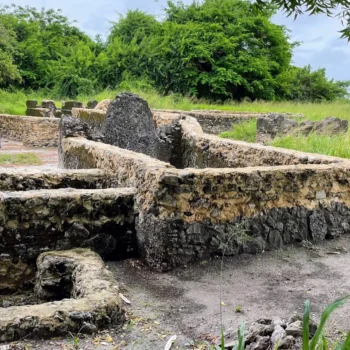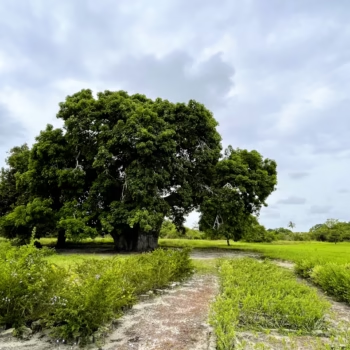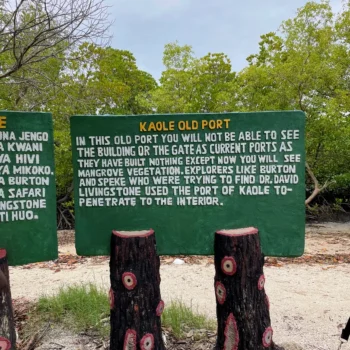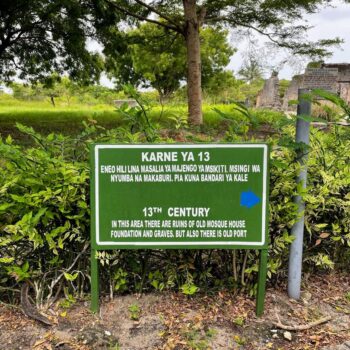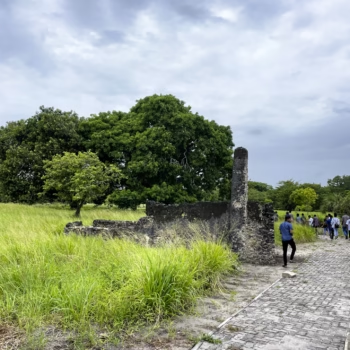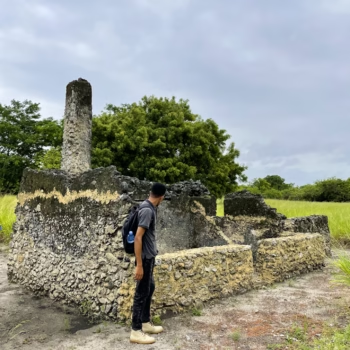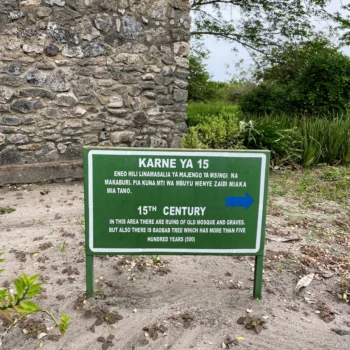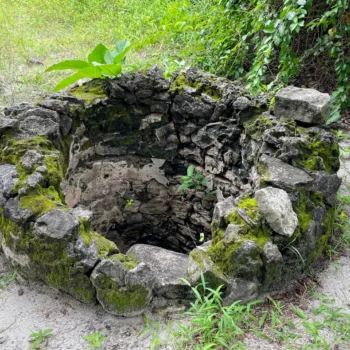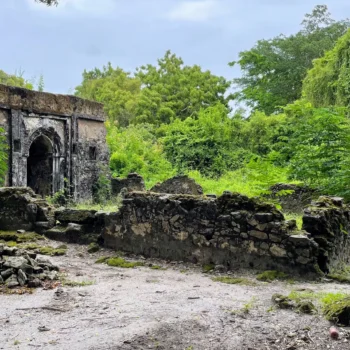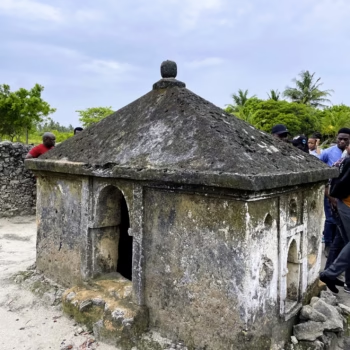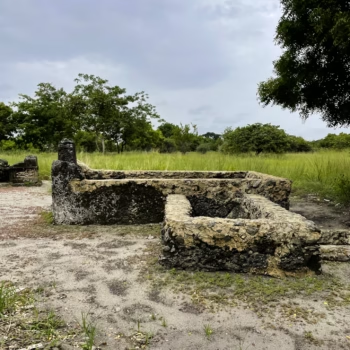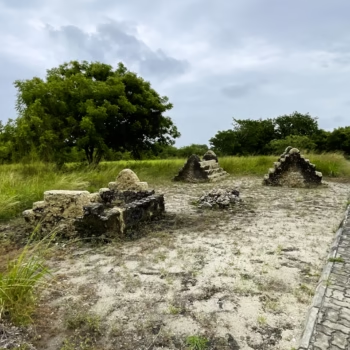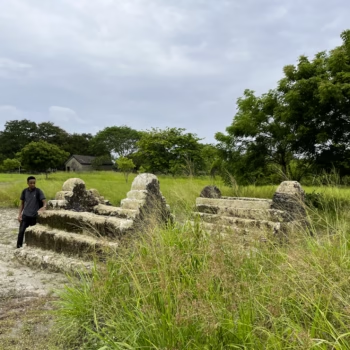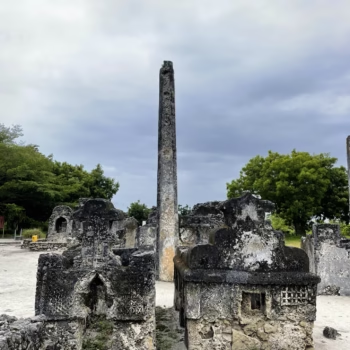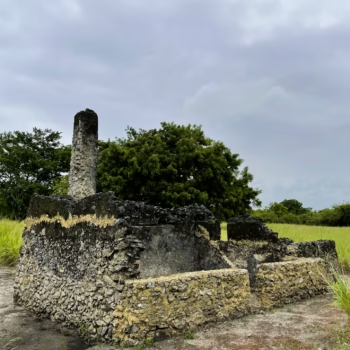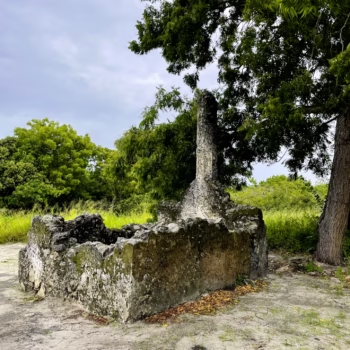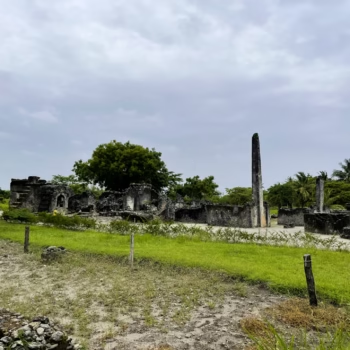The Kaole Ruins are located 5 km north of Bagamoyo. They offer a fascinating look into Tanzania’s rich history. These ruins tell the story of a once-thriving commercial center that predates Bagamoyo itself. The Kwere and Zaramo people lived here since the 8th century. They called the area “Pumbuji,” meaning fertile soil.
In the 13th century, foreigners arrived. Locals exclaimed, chite tukalole (Kwere) or tuchole tukalole (Zaramo), meaning “let us go and see.” The foreigners mispronounced it as Kaole, and the name stuck.
A Thriving Trading Hub
Kaole started as a small trading post for the Swahili people. Merchants traded goods like mangrove poles, sandalwood, ebony, and ivory. By the 13th century, it became a bustling economic center. Today, the ruins feature two mosques and over 20 tombs, all built with durable coral stone. These structures stand in contrast to the wooden homes of the inhabitants, which have disappeared over time.
The 13th-century mosque is one of the oldest in mainland Tanzania and East Africa. It shows the architectural styles and religious practices of the time. The tombs are built in the Shirazi pillar style, similar to those at the Tongoni Ruins. These tombs vary in condition and height, with taller pillars indicating the importance of the person buried beneath. They are believed to belong to influential figures like local rulers (diwani) and esteemed Sheikhs, each tomb holding a story of the past.
Decline and Rediscovery
Kaole’s prominence declined during the 17th century. Shifting trade routes and the rise of Bagamoyo played a role. The arrival of the Portuguese in the 15th century also contributed, though historians still debate the exact causes.
In 1958, British archaeologist Neville Chittick became the first to study the Kaole Ruins. His work helped uncover the site’s historical significance. Today, the ruins remind us of the region’s rich past. They offer a chance to explore the lives of those who lived here centuries ago.
Interesting Facts About Kaole Ruins
- The name Kaole means “let us go and see,” a mispronunciation by 13th-century foreigners.
- Home to one of the oldest mosques in mainland Tanzania, dating back to the 13th century.
- The height of the tomb pillars reflects the importance of the person buried beneath.
- Features a historic baobab tree believed to be over 500 years old.
How to Get There
The Kaole Ruins are in Bagamoyo, about 70 km north of Dar es Salaam. You can reach them by:
- Public Transport: Take a daladala (local bus) from Dar es Salaam to Bagamoyo.
- Private Vehicle: Drive north along Bagamoyo Road. The trip takes about 90 minutes to 2 hours, depending on traffic.
While in Bagamoyo, you can also visit other attractions like the Catholic Church, Slave Route Museum, and Saadani National Park, about an hour’s drive away. Nearby, you’ll find camel rides, reptile exhibits, and local markets, making it a perfect day trip.
